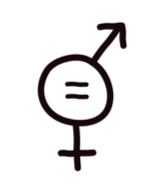The Sankoya System - A Real Sh*t Disruptor
We’re introducing a new approach to sanitation infrastructure. On-site micro-treatment systems powered by human waste. Easy to install, easy to maintain and user-friendly, communities quickly realize the benefits of sanitation without the capital, environment burden and long lead times associated with centralized systems.
How it Works
Sankoya’s next-generation waste treatment solution was developed to be effective, accessible, and sustainable. Our patented process harnesses the energy embedded within human waste to fuel the treatment process - a sanitation system powered by human waste. Within a span of 24 hours, solid waste is converted into pathogen-free ash that is safe for disposal.
The size of a (North American) dishwasher, the system is adaptable for community and in-home installations.
Effective
Treats up to 5 Tons of waste/year
100% destruction of pathogens in 24 hours
Sustainable
Waterless
Ultra-energy efficient
Offsets up to 150kg of methane/year
No consumables
Accessible
Waste is treated at source eliminating need for connective infrastructure
Automated control system to ensure seamless operation
Adaptable for wide range of use cases and user behaviours
User-friendly one-button “flush and forget” experience. All processing occurs “below the floor”.

Benefits of Adoption
For the environment
Reduced carbon footprint
Water conservation
Improved water quality
Reduced methane emissions
Improved soil quality
For Communities
Improved public health
Increased resiliency to climate change
Reduced burden on current infrastructure
Faster response to mass urbanization
For Businesses and Institutions
Compliance with regulatory requirements
Improved productivity
Improved facilities
Reduced absenteeism

Partner with Us
We work with different types of partners. Are you one of them?









